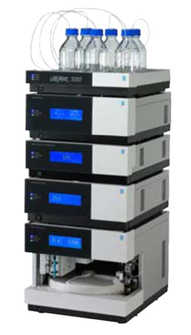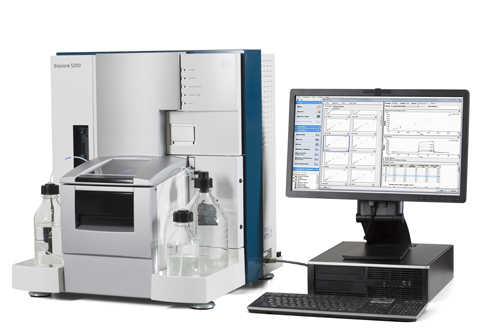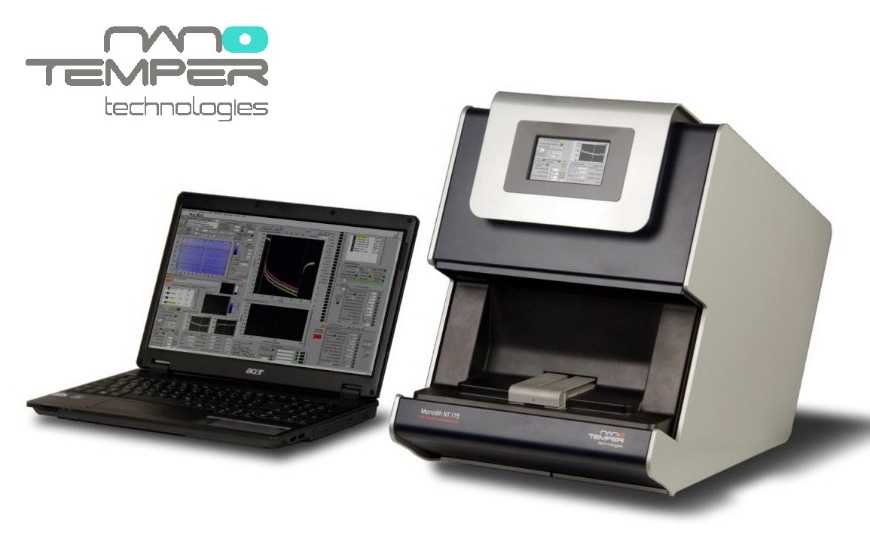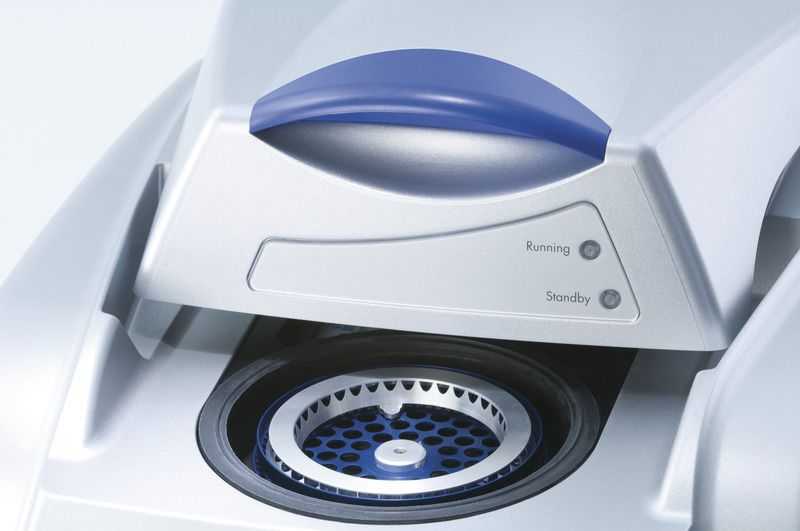Our toolchest of membrane protein functional assays allows us to check the homogeneity, thermostability and ligand-binding properties of the membrane protein of interest.
A necessary requirement in any macromolecule study program is the comprehensive bioanalytical characterization that includes quantification of the interactions that the molecules have with their partners and-/or- ligands. Ligand binding assays allow to evaluate kinetic parameters for binding events and also allow to search for the candidate with the best affinity, on-/off- rates. Also the ligand binding assays are used to validate the relevance and identity of recombinant GPCR produced for structural and biophysical studies.
Soon our platform will be upgraded with cell-based second messenger GPCR assays.
Thermo Scientific Dionex UltiMate 3000

Analytical UHPLC Chromatography system with diode-array, fluorescent and refractometry detectors.
Support pressures up to 620 bar (9,000 psi) at ow rates of up to 10 mL/min, detector data collection rates up to 100 Hz, and injection cycle times as low as 15 s with microvolume automatic sample loader compatible with eppendorf tubes and other formats - from 384 well plates to 10mL vials. Fraction collector is also present.
We have a set of columns for analytical size exclusion chromatography (e.g. Sepax nanofilm SEC-250 (4.6x250 mm)) and C18 reverse phase.
aSEC is used to evaluate membrane protein stability and homogeneity.
We plan to upgrade it with HPLC-ELSD detector Dionex Corona, viscometer and advanced light scattering detector.
GE Healthcare Biacore T200

Biacore T200 exploits the surface plasmon resonance (SPR) methodology and is a versatile, label-free system for detailed studies of biomolecular interactions, from early research to drug discovery and development, and on to quality control.
The system delivers kinetic, affinity, concentration, specificity, selectivity, comparability, and thermodynamic interaction data – in real time with high sensitivity. Interactions characterized by on- and off-rates at the extremities of the kinetic scale can be analyzed.
Main applications
The performance and versatility of Biacore T200 provides several advantages for a large range of applications involving biomolecular interaction studies.
- Binding events kinetics study ( Kd, kon amd koff)
- Increase understanding of molecular mechanisms and structure-function relationshionship
- Select, characterize, and assess comparability of biotherapeutics
- Select and optimize lead compounds during drug discovery
- Detect and characterize anti-drug antibodies (ADA) in immunogenicity studies
- Perform time- and cost-efficient concentration analysis
We are aimed to study GPCRs and other important drug target interactions with small ligands.
NanoTemper Monolith NT.115 BLUE/GREEN

This device exploits the principle of microscale thermophoresis (MST). When performing an MST experiment, a microscopic temperature gradient is induced by an infrared laser, and the directed movement of molecules is detected and quantified using either covalently attached dyes, fluorescent fusion proteins, or intrinsic fluorescence.
It measures the motion of molecules along microscopic temperature gradients and detects changes in their hydration shell, charge or size. Upon binding events these parameters change and that can be detected with high sensitivity.
With this methodology we are also aimed to study GPCRs and other important drug targets interaction with small ligands.
Synergy™ H4 Hybrid Multi-Mode Microplate Reader

This plate reader is aimed to perform fluorescent-based assays and has both monochromator- and spectral filter-based optics. Monochromators offer the flexibility to read a virtually unlimited range of excitation and emission wavelengths, without the requirement for purchasing and swapping out a wide range of filters during the assay development phase. Monochromators also provide the ability to determine the spectra of chromophores and fluorophores for multiple applications including UV-Vis spectra of protein folding and assessing purity of isolated biomolecules. Filters provide significantly increased light throughput of desired analytical signals leading to improved sensitivity and facilitate detection modes such as fluorescence polarization (FP) and time-resolved fluorescence resonance energy transfer (TR-FRET).
We also have the BioTek’s Take3™ Multi-Volume Plate for low-volume measurements down to 2 μL.
This device could be used for cell based assays and liquid absorption/fluorescence spectroscopy.
Qiagen Rotor-Gene Q

This real time PCR machine we use for thermal shift (differential scanning fluorimetry) assays of membrane proteins. We melt the protein of interest upon different conditions and that gives us information on how to increase protein thermostability.
J-1100 Circular Dichroism spectrophotometer
This device is used to control secondary structure formation/changes in proteins. The wavelength range from 180 to 600 nm is suitable for obtaining secondary and tertiary structure measurements in the near- and far- UV. When fitted with a Peltier cell holder, the J-1100 can be used for measurement of CD, LD and absorbance as a function of wavelength, temperature and time.












